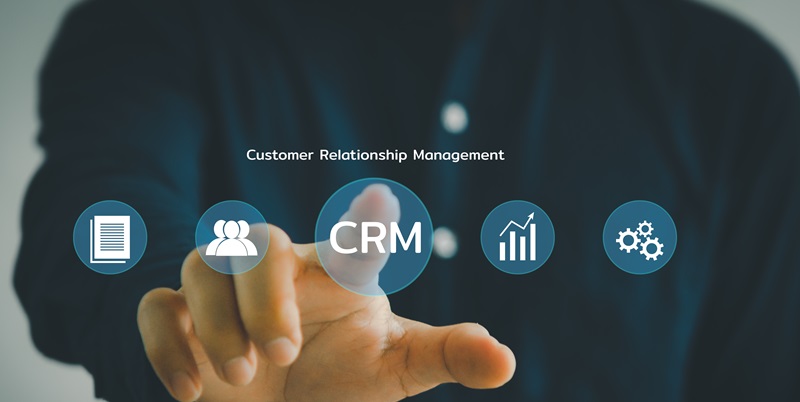In today’s digital ecosystem, Customer Relationship Management (CRM) platforms, particularly Salesforce, are crucial for businesses aiming to enhance their growth and strengthen customer bonds. As a front-runner in the CRM industry, Salesforce provides an array of tools designed to improve sales, customer service, and marketing initiatives. While newcomers might find Salesforce’s extensive features and capabilities overwhelming at first glance, a methodical approach to utilizing this platform can significantly benefit their businesses.
Salesforce’s arsenal includes customizable dashboards, data analysis features, lead and sales tracking, and marketing automation that work synergistically to provide a comprehensive view of customer interactions. Its cloud-based nature ensures accessibility from anywhere, which is vital in our increasingly mobile world. Moreover, Salesforce’s commitment to innovation means the platform is constantly evolving with new features and updates that cater to the dynamic nature of customer relationship management.
Learning to navigate Salesforce effectively opens doors to optimized customer engagement, better data-driven decision-making, and streamlined business operations. Although there might be an initial learning curve, the long-term advantages of mastering Salesforce can lead to increased efficiency and profitability for those willing to invest the time to understand its full scope.
Establish Your Goals
The integration of a CRM system must be undertaken with clear business objectives in mind. Before introducing Salesforce into your company’s ecosystem, it’s imperative to identify the end goals that you wish to achieve. Determine whether the focal point is escalating sales efficiency, enhancing customer satisfaction, or improving the effectiveness of marketing campaigns. Understanding the specific pain points that Salesforce can resolve will provide a blueprint for a targeted CRM strategy that is aligned with your business aspirations.
Salesforce’s robust analytics and reporting tools afford businesses the capacity to track progress and adapt strategies efficiently. Goals should, therefore, be measurable and responsive to the insights garnered from the platform. With a clear set of objectives, you can customize Salesforce to your unique operational needs, ensuring that the CRM system works for you and not the other way around.
Commit to Learning and Development
Salesforce, with its expansive suite of functionalities, demands a certain level of expertise to be navigated effectively. Committing to the training and development of your team is crucial. Make the most of the resources endowed by Salesforce, including Trailhead—a gamified online learning platform, detailed documentation, and user communities. These resources provide valuable insights into both the fundamentals and advanced features of Salesforce. By ensuring that your team is educated in the platform’s use, you significantly increase your chances of CRM success.
A proficient team can leverage Salesforce’s capabilities to their fullest, creating automation for repetitive tasks, personalizing customer interactions based on actionable data, and implementing strategic marketing campaigns that drive conversions. Training should be regarded as an investment, one that is fundamental to realizing the full scope of Salesforce’s business-enhancing potential.
Implement Incrementally
When you commence with Salesforce, the adage “Less is more” could not be more apt. Begin with the implementation of essential features that address your most pressing business needs. This incremental approach allows you to familiarize yourself with the platform’s capabilities without overcomplicating processes. As your business grows and your team becomes more adept at utilizing Salesforce, you can then start to explore and integrate additional features.
This phased strategy not only prevents overwhelm but permits a smoother transition for your team, ensuring that each new feature is adopted effectively before moving on to the next. Regular assessments at each stage allow you to tweak and tailor Salesforce to your evolving business requirements, ensuring a CRM strategy that is both dynamic and responsive.
Engage with the Salesforce Community
Salesforce boasts a vast and active community that serves as an invaluable resource for both novices and seasoned users alike. When beginning your CRM journey, engaging with this community can provide you with a wealth of practical advice, solutions to common challenges, and innovative ways to use Salesforce that you might not have considered. Take part in online forums, subscribe to user groups, and attend community events to tap into this collective knowledge base.
The advantage of such engagement is the real-world experience and peer support it offers. The community can serve as a support network—a place to exchange ideas, get feedback on your CRM strategies, and keep abreast of the latest Salesforce features and best practices. By being an active member, you can accelerate your Salesforce mastery and contribute to the community in kind.
Pursue Ongoing Enhancements
Finally, embracing a mindset of continuous improvement is critical when working with Salesforce. The platform is constantly evolving, offering new functionalities and updates that can be leveraged to maintain a competitive edge. Regularly review your Salesforce setup, solicit feedback from users, and assess if the CRM is adequately meeting business needs. Continuous refinement and willingness to adapt to new features and improvements are key to CRM optimization.
Remember, the journey with Salesforce is iterative. Businesses that stay agile and open to change can develop a CRM system that not only meets current demands but also anticipates future challenges and opportunities. This forward-thinking approach is what can transform a standard CRM implementation into a powerful engine for growth and customer engagement.
In summary, mastering Salesforce for business growth is a strategic process that requires clear objectives, dedicated learning, incremental implementation, community engagement, and ongoing enhancement. With these steps, you will not only navigate the CRM landscape but also harness Salesforce’s full power to catalyze your company’s growth.

